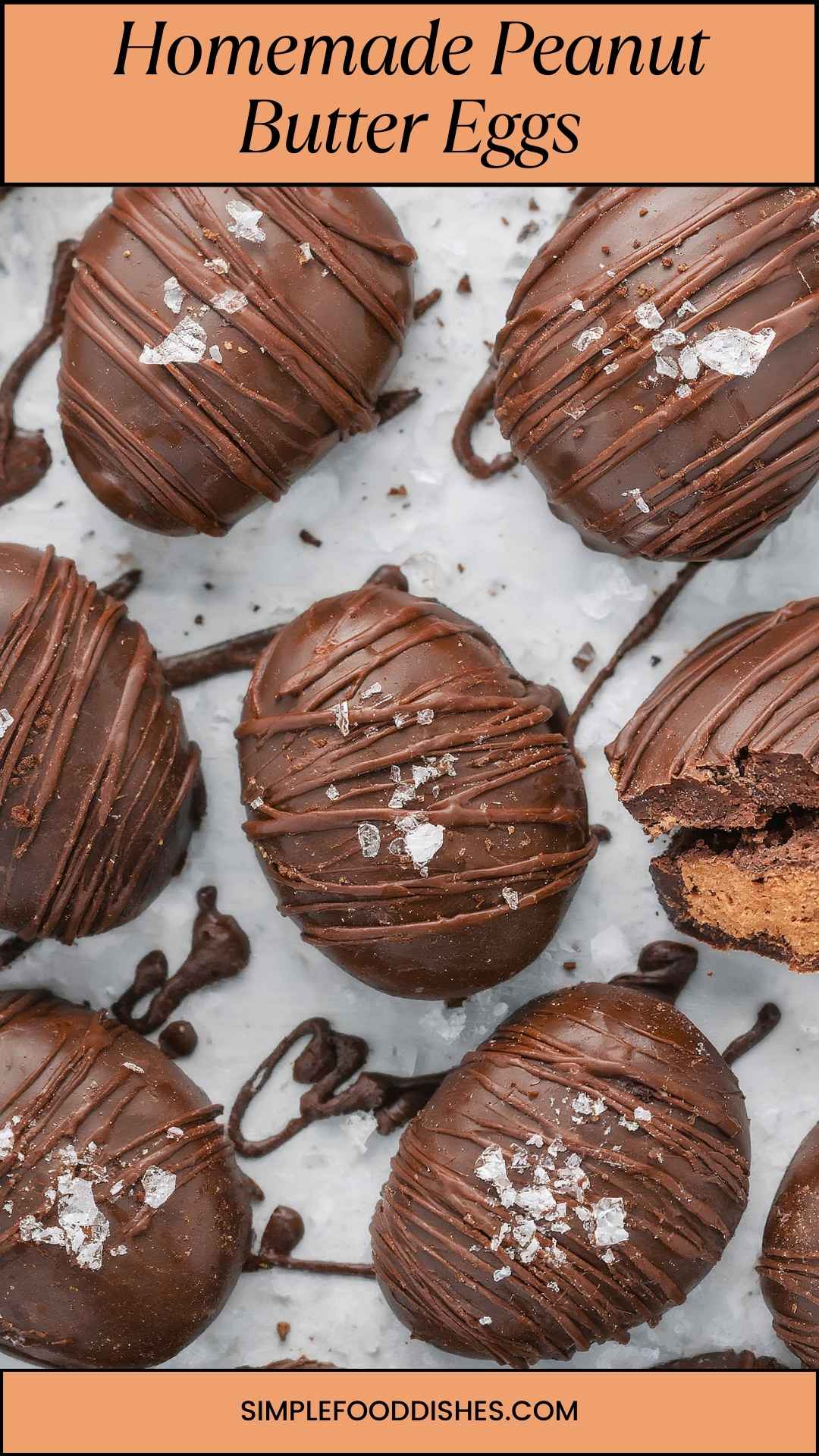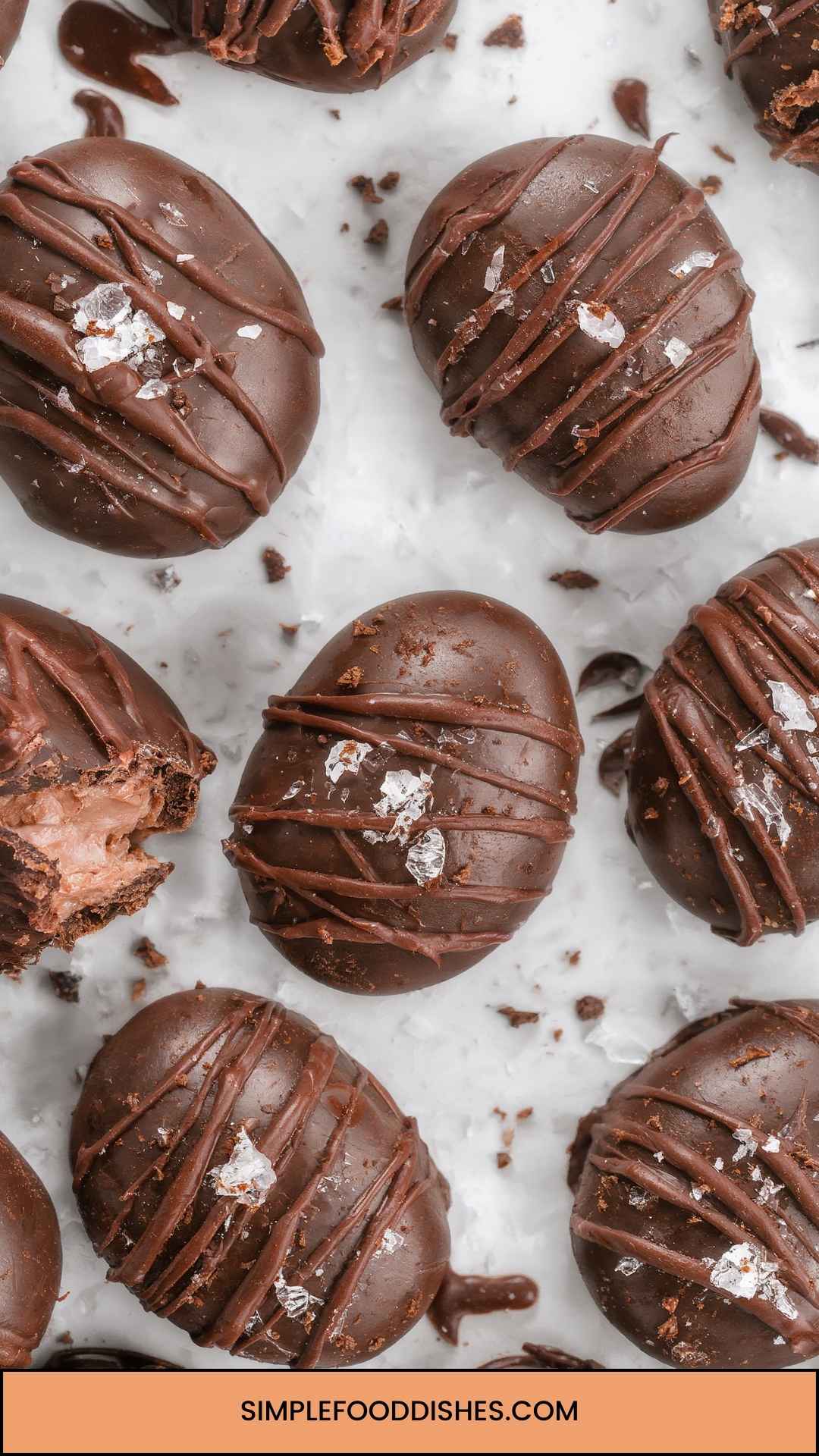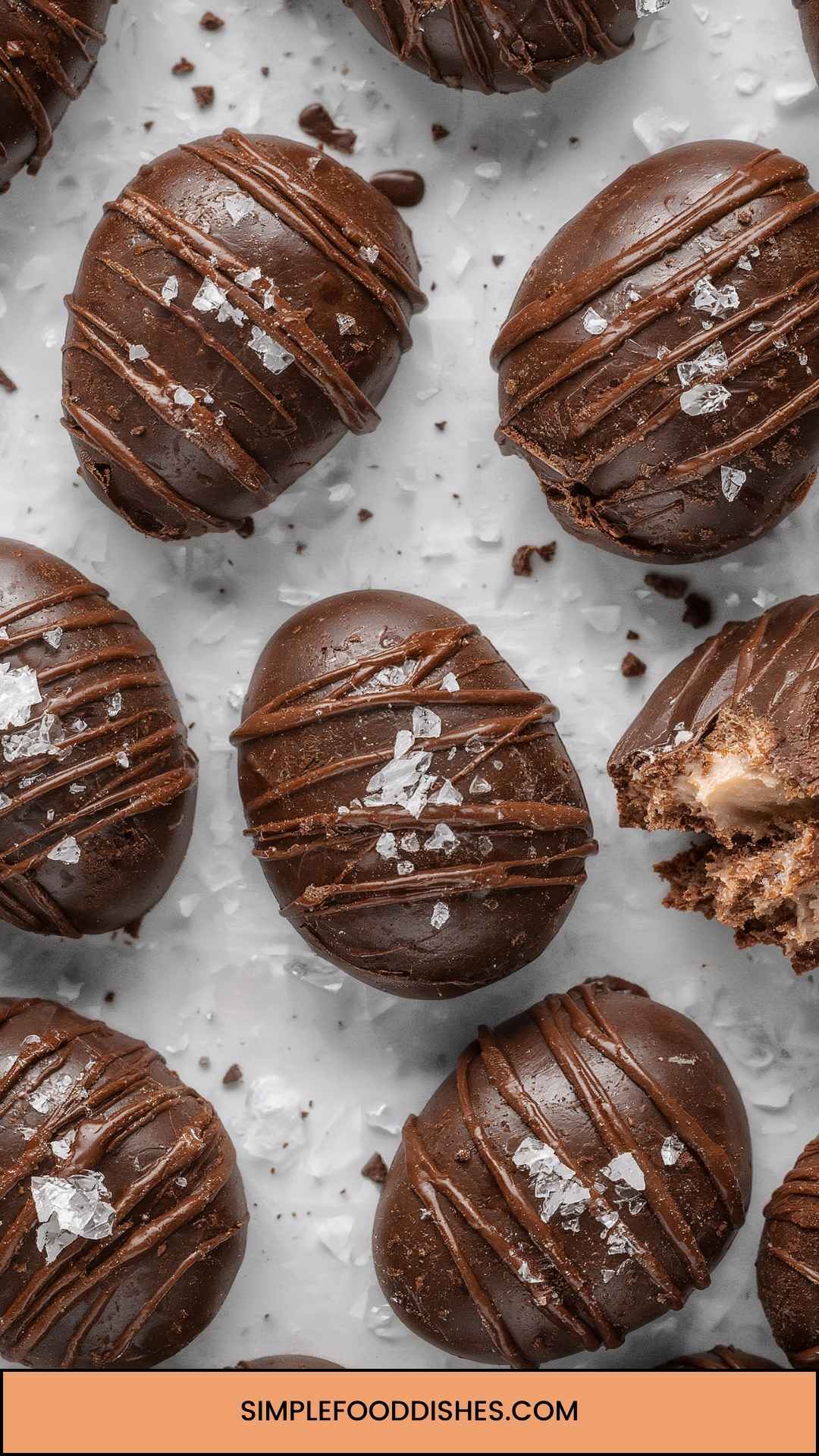Before diving into the joys of making your own homemade peanut butter eggs, let's discuss what you can enjoy alongside these delightful treats. Picture yourself at a family gathering or a cozy evening snack. Here are some perfect pairings:
Milk: The classic combination of peanut butter and chocolate pairs beautifully with a tall glass of cold milk. Whether you’re a fan of skim, almond, or chocolate milk, it brings a creamy element that complements the rich flavors of the egg.
Coffee: Want to elevate your afternoon snack? A cup of freshly brewed coffee, especially a mocha or latte, can give your palate a striking contrast to the sweetness of the eggs.
Fruit: Fresh fruit, like bananas or apples, adds a refreshing crunch. The juiciness cuts through the richness and balances out the flavors beautifully.
Now that we’re set on making delicious pairings, let’s hop into the magic of creating homemade peanut butter eggs!
Why This Recipe Works
When it comes to something as beloved as peanut butter eggs, the recipe has to be spot-on to evoke that classic taste. So, why does this homemade version stand out? Here are a few compelling reasons:
1. Simple Ingredients
This recipe uses commonplace ingredients. You might already have them in your pantry. The simplicity allows the flavors of the peanut butter and chocolate to shine through without excessive sweeteners or additives.
2. Customization
You can easily tweak this recipe. Want richer chocolate? Opt for dark chocolate. Want to be health-conscious? Use less sugar or alternative sweeteners. The flexibility ensures that anyone can enjoy this treat according to their dietary preferences.
3. Homemade Taste
Nothing beats the fresh taste of something made by you. Homemade treats have that personal touch that store-bought ones often lack. You’ll find joy in crafting each egg and can even fold love into the process, ensuring each bite is filled with warmth.
4. Cost-Effective
Making your own peanut butter eggs can save you money. Store-bought versions can be pricey, especially around the holidays. With this recipe, you can create a batch that’s not only tastier but more economical, and you can share generously!
How Does It Taste Like?
Expect a delightful balance of textures and flavors. The creaminess of the peanut butter is smooth, while the outside chocolate coating is rich and satisfying. Each bite offers a wonderful melding of sweet and salty, not to mention the pleasant crunch of the chocolate shell. You’ll experience a comforting familiarity that brings memories rushing back while also appreciating a fresher take on a classic favorite.
What Sets This Recipe Apart from Other Homemade Peanut Butter Eggs Variations?
While many recipes exist, this one prides itself on incorporating just the right ratios and choices for ingredients. The use of ground cinnamon adds a subtle warmth that elevates the overall flavor. Most variations stick to the basics, but this little twist gives it an edge that stands out. It’s not just about filling chocolate with peanut butter; it’s about creating a delightful experience in every bite.
Furthermore, rather than requiring a bunch of special equipment or techniques, this recipe remains straightforward. Whether you are a beginner or a seasoned cook, you can master it without feeling overwhelmed.
The Ingredients
Let’s get down to the basics. Here’s what you’ll need for your homemade peanut butter eggs:
12 ounces (3 × 4-ounce bars) semi-sweet chocolate, roughly chopped
1 teaspoon neutral vegetable oil
6 tablespoons unsalted butter, softened at room temperature
1 cup smooth peanut butter (avoid natural or oily varieties)
2 and ½ cups powdered sugar, sifted
½ teaspoon pure vanilla extract
1/8 teaspoon fine sea salt
½ teaspoon ground cinnamon (for that unique flavor)
Optional: sprinkle of coarse or flaky sea salt for garnish
These ingredients are reliable staples that result in the best flavor and texture!
Instructions
Step 1: Prepare the Peanut Butter Mixture
In a large bowl, combine the softened butter (make sure it's at room temperature) and the peanut butter. Use a spatula or mixer to blend these together until creamy and smooth. Then, mix in the sifted powdered sugar, vanilla extract, sea salt, and how about the special touch... ground cinnamon! Stir until well combined. This mixture will become your delightful filling.
Step 2: Form the Egg Shapes
Using your hands (it’s okay to get a little messy), grab a spoonful of the peanut butter mixture. Roll it into an egg shape; you can aim for about two inches long. The result should be smooth and uniform. Place these on a baking sheet lined with parchment paper. Before you know it, you’ll have an array of peanut butter eggs ready for dipping!
Step 3: Chill the Eggs
Pop the tray in the freezer for about 30 minutes. This step is key! Chilling them helps the chocolate coating adhere better and keeps the eggs from losing their shape during the dipping process.
Step 4: Prepare the Chocolate Coating
While the eggs are chilling, it’s time to melt your chocolate along with the vegetable oil. Place the chopped chocolate into a microwave-safe bowl and melt it in short 30-second bursts. Stir between each interval until the chocolate is completely smooth. Alternatively, you can use a double boiler to melt the chocolate if you prefer that method.
Step 5: Coat the Peanut Butter Eggs
Once the eggs are firm, take them out of the freezer. Using a fork or a toothpick, dip each egg into the melted chocolate, allowing any excess to drip off. Return them to the parchment-lined baking sheet. Don’t forget to sprinkle a little coarse or flaky sea salt on top before the chocolate sets for an extra flavor punch!
Step 6: Let Them Set
You can place the coated eggs back in the fridge to let the chocolate set fully, which usually takes about 30 minutes. Once they are set, they are ready to be devoured!
Notes
Here are several handy tips to ensure your peanut butter eggs turn out perfectly:
Select Quality Chocolate: The chocolate is an essential factor. Always choose good quality chocolate for melting. It makes a big difference in taste.
Use Softened Butter: Ensure your butter is at room temperature for easy mixing. Cold butter can make the mixture lumpy.
Sift Your Sugar: Sifting the powdered sugar eliminates lumps and results in a smoother filling.
Add Extra Flavor: If you like a deeper flavor, try using dark chocolate or even flavored chocolates for coating.
Experiment with Fillings: Think about adding crushed nuts or even mini chocolate chips into the peanut butter mixture for added texture.
Nutrition Information
I know you’re interested in health, so here’s a quick breakdown:
Serving Size: 1 egg
Calories: Approximately 185
Fat: 11g
Carbohydrates: 20g
Protein: 4g
Let’s be honest; these will be a treat, not an everyday snack!
How Do You Store This Homemade Peanut Butter Eggs?
Store your peanut butter eggs in an airtight container at room temperature for up to a week. If you find yourself making a large batch, consider refrigerating them for added freshness. If you want them to last longer, freeze them in a freezer-safe container, and pull them out when you need a quick treat.
Sides for Homemade Peanut Butter Eggs
Feeling like pairing your sweet treat with something delightful? Here are three suggestions:
1. Fresh Veggies and Hummus
The crisp crunch of vegetables like carrots, celery, and bell peppers with a smooth hummus dip can serve as a refreshing side that balances the sweetness of the eggs.
2. Charcuterie Board
Create a small charcuterie board with a selection of cheeses, nuts, and dried fruits. The salty and savory contrasts beautifully with the sweet peanut butter eggs.
3. Ice Cream
Speaking of indulgence, consider serving your homemade peanut butter eggs alongside a scoop of vanilla or chocolate ice cream. The creamy cold ice cream enhances the flavor experience with every bite.
What Alternatives Can You Use for the Ingredients?
Don’t fret if you find yourself missing a few items! Here are some ideas for substitutes you can use:
1. Nut Butters
If you’re not a peanut butter fan, try almond or cashew butter instead. They provide a different flavor but maintain that creamy texture for your filling.
2. Coconut Oil
Looking for an alternative to vegetable oil? Coconut oil is a fantastic choice and adds a subtle coconut flavor, bringing a unique twist to your chocolate coating.
3. Sugar Alternatives
If you want to skip the powdered sugar, powdered erythritol or monk fruit sweetener could work well as low-calorie substitutes.
4. Dairy-Free Chocolate
If you follow a dairy-free or vegan diet, there are many chocolate brands available that use plant-based ingredients, allowing everyone to enjoy this recipe without worry.
Conclusion
Homemade peanut butter eggs are not just easy to make, they’re also satisfying to share. This recipe appeals to kids and adults alike, bridging the gap between simple treats and nostalgic memories. You can feel proud of making these by hand and sharing them with loved ones.
Each bite is a reminder of the warmth that comes from homemade goodness. So, why not get started? Gather your ingredients and enjoy the delightful experience of creating something truly special. Your taste buds will thank you!
You’ll also like the following recipes!





